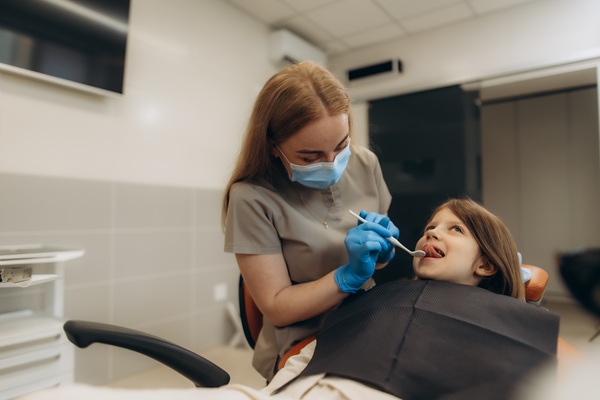How Phase 1 Orthodontics Can Prevent More Serious Future Problems

Phase 1 orthodontics helps prevent developing bite issues from impacting a child’s development or turning into something worse. It typically starts around ages six to nine since a child’s jaw and facial structures are easier to manipulate at this stage.
Minor orthodontic issues like not having adequate space on the jaw for their permanent teeth can turn into more severe issues like crooked teeth later in a child’s life. Phase 1 orthodontics tackles these issues before they cause significant problems.
Preventing future bite issues with phase 1 orthodontics
The American Association of Orthodontists recommends bringing children in for their first appointment by the age of seven. Their bite should be mostly developed at this time so that an orthodontist can spot developing issues. Some of the bite issues that can be detected at this stage include:
- Poor placement of teeth
- Unnatural gaps between teeth
- Misaligned or crowded teeth
- Poor jaw development
- Teeth that failed to erupt
A child’s bite assessment usually involves an orthodontist visually inspecting the patient’s mouth, looking for visible problems. Digital x-rays are often used to view the internal structures of the child’s teeth and gums. Appropriate treatments are recommended if the orthodontist notices any abnormalities in the child’s bite.
Some of the treatments that might be recommended during phase 1 orthodontics include:
- Palatial expanders: These appliances are used to apply continuous pressure on a child’s palate by fastening it to the roof of their mouth. It encourages the widening of the palate, creating more space for the child’s teeth
- Headgear: These appliances help to promote proper jaw alignment and growth. Headgear can also be used to correct a child’s bite. The appliance is worn partly outside the mouth, and it is usually reserved for the most severe bite issues. It is virtually impossible to get a child to walk around in public wearing headgear, and it is hard to blame them for feeling that way. The aesthetics are awful. Orthodontists recommend wearing them for about 12 hours daily, and they can be worn during sleep
- Braces: An orthodontist might recommend placing braces on some of a child’s teeth to help fix bite issues. Braces have been around for centuries, and they straighten teeth by pushing on them. Braces can be used to address a wide range of orthodontic issues, and they can help to realign a child’s jaw
- Retainers: Retainers are used to maintain the results of early orthodontic treatments. Moving teeth to a better alignment is only half of the battle. It takes some time for new bone and tissue structures to build up around the new position to permanently keep the patient’s teeth there. Retainers help to prevent the child’s teeth from shifting back to their old position
Start your child on the right track
Successful phase 1 bite treatment significantly reduces your child's chances of developing severe bite issues as they grow older. Look at it as preventative treatments that ensure your child’s teeth and jaw develop correctly. Give us a call or visit our Cedar City clinic to learn more about phase 1 orthodontics.
Request an appointment here: https://www.cedarsmilesorthodontics.com or call Cedar Smiles Orthodontics at (435) 233-2022 for an appointment in our Cedar City office.
Check out what others are saying about our dental services on Yelp: Orthodontics in Cedar City, UT.
Related Posts
Invisalign® for teens is a discreet treatment that corrects mild and moderate orthodontic issues. Clear braces are an aesthetic upgrade to the metallic look of traditional braces. This quality is the same reason that adults choose Invisalign to straighten their teeth. Like image-conscious teens, adults who would otherwise forego orthodontic treatment can improve their smile…
Phase Two orthodontics is the second stage in comprehensive orthodontic treatment, typically following an initial intervention known as Phase One. The primary objective of Phase Two orthodontics involves perfecting alignment, correcting bite issues, and achieving optimal aesthetics and function. Patients often undergo Phase Two orthodontics during adolescence, once most permanent teeth have emerged, allowing for…
It is common for children to face challenges with their oral health, and one of the professionals who can help is a kids orthodontist. While an orthodontist does not focus on cleaning the teeth and filling cavities, they do work on a holistic level to set up the child for oral health success both now…
A palate expander is a specialized orthodontic device used to widen the upper jaw, creating more space in the mouth and improving overall bite alignment. By gradually separating the two halves of the palate, this device helps guide proper facial and dental development, especially in children and adolescents whose bones are still growing.Palatal expansion becomes…
